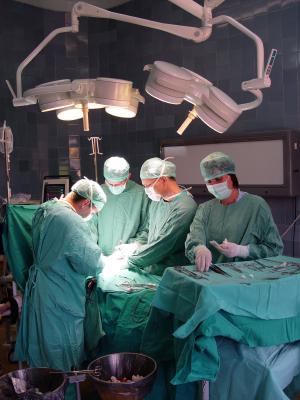for Our Clients Since 1935
Surgical Errors
Operation Mistakes; Surgery Malpractice

There are many obvious surgical errors, such as instruments, sponges, needles or other tools being left inside a patient, or where the wrong patient is wheeled into the operating room, or where the wrong limb is operated on, or where the patient falls off the operating table.
Less obvious surgery mistakes abound ––– the patient may have an inexplicably bad result, or may suffer a symptom that is not within the known risks of the medical procedure. Surgical errors can be caused by many careless or negligent actions or omissions on the part of medical personnel, but common errors include: Poor pre–operative planning, errors during the procedure, anesthesia malpractice, incorrect or erroneous incisions, nerve damage, wrong site surgery, post–operative errors, and failure to prevent infections.
Surgical and other medical errors are by now infamously widespread in the United States, including New York. Many errors could be prevented if only medical professionals would adopt, and follow, strict safety protocols or rules. The Joint Commission, the body that accredits hospitals, has developed a “Universal Protocol” for surgeons. The most important part of this protocol is check lists and take “time–outs” to verify that it is the right patient, the right body part, the right procedure, etc.
When a patient requires a surgical procedure, doctors are required to inform him or her about inherent risks associated with the surgery. Virtually all surgeries carry at least some risks, which a patient legally assumes as long as they are told about them (examples: anesthesia reactions, infection, blood clots, heart attacks, healing complications). But a surgical mistake is not one of the risks that the patient legally assumes when he agrees to the surgery. A surgical error is the doctor’s fault; it is a departure from good medical practice. New York malpractice law gives the patient a right to claim compensation for injuries caused by such errors.
Too many people are needlessly injured by surgical error, which is a type of medical malpractice. By “medical negligence” or “medical malpractice”, we mean that a medical professional’s procedures, skill and care fell below the standard and proper medical care in the profession, and that this failure led to serious injury, including nerve damage, organ damage, unnecessary scarring, loss of range of motion, paralysis, loss of sensation, heart attacks and death.
About 50% of malpractice trials are against surgeons, and of those, the plaintiff wins only about 25% of the time. This of course means that the surgeon wins about ¾ of the time. As you can see, the odds are stacked against the medical malpractice victim, so he or she should carefully select a skillful medical malpractice lawyer.
To be fair, though, it must be said that these numbers do not mean that your medical malpractice case is likely to be “lost”, though. First, the above statistics do not take account of the countless medical malpractice claims that are settled out of court. If the plaintiff has a particularly and obviously strong case, the surgeon’s insurance carrier is likely to offer a fair settlement before trial. But your chances of getting a good settlement offer, and of winning at trial, are both increased when you are represented by a competent medical malpractice lawyer.
The Syracuse, New York surgery error lawyers of Michaels Bersani Kalabanka have recovered millions of dollars for clients injured, or whose loved ones were killed, by surgical errors and for other injuries. If you or a loved one has been a victim of a surgery malpractice, CONTACT US for a free consultation with an experienced lawyer who can inform you of your legal rights and maximize your compensation.











